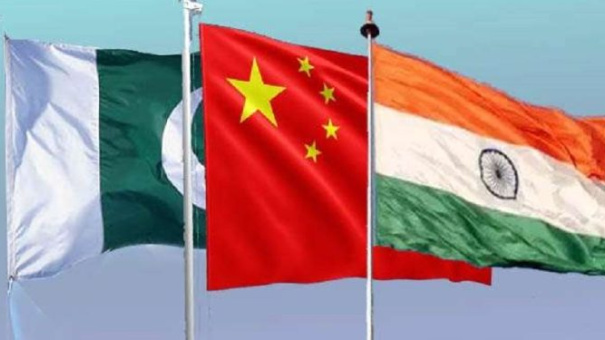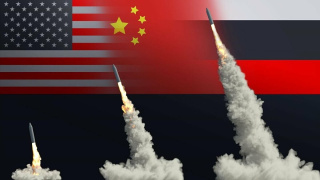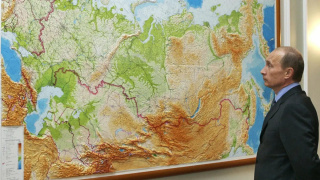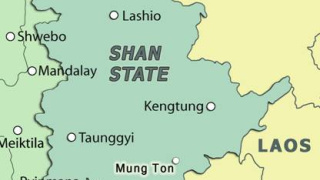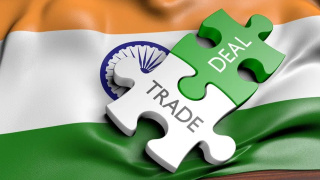China begins long game in South Asia after India and Pakistan clash
China has begun a long game in South Asia after India and Pakistan clashed following the terror attack in Pahalgam on April 22, in which 26 innocent tourists were killed.
Chinese diplomacy to dial down tensions was in high gear as military tensions between India and Pakistan escalated earlier this month.
There are three key drivers that can explain China’s keenness to defuse the deep rooted acrimony between New Delhi and Islamabad, especially after India attacked Pakistan deep inside its territory including the Noor Khan air base in Rawalpindi. Formerly known as Chaklala, this prized facility is close to the Pakistani military headquarters. It is also crucial for launching air force operations apart from housing VIP transport units.
But more importantly, the base is near the headquarters of Pakistan’s strategic plans division. This is a crucial node in the command-and-control architecture of Pakistan’s nuclear arsenal comprising at least170 warheads.
First, Chinese are extremely wary of conflict driven instability in Pakistan at it could undermine the safety, as well as future, of the China Pakistan Economic Corridor (CPEC). The Chinese view CPEC as the flagship of their Belt and Road Initiative (BRI). Starting from the Arabian Sea port of Gwadar in Pakistan’s Balochistan province, it heads northwards to Kashgar in China’s Xinjiang Autonomous Region (XAR). Apart from Balochistan, CPEC also passes through Gilgit Baltistan, a part of the undivided Jammu and Kashmir that India claims as its own, based on the accession document that the former Maharaja of Jammu and Kashmir had signed with India in October 1947.
Besides, the corridor passes through Punjab, Pakistan’s heartbeat as well as the restive Khyber Pakhtunkhwa (KP) province. Both Balochistan and KP are witnessing raging insurgencies, casting an uneasy shadow over CPEC.
In Punjab, CPEC benefits key cities such as Lahore and Faisalabad where several industrial and energy projects have been earmarked. The provincial initiatives include the 1320 MW Sahiwal Coal-fired Power Plant and the 1000MW Quaid-e-Azam Solar Park in Bahawalpur. The Allama Iqbal Industrial City (AIIC) also falls under the CPEC initiative.
In Khyber Pakhtunkhwa, the corridor connects with the Karakoram Highway, facilitating trade and connectivity between Pakistan and China. It also hosts the 884MW Suki Kinari Hydropower Project, the Rashakai Special Economic Zone as well as the Karot Hydropower Project, close to the Punjab-KP border.
Second, the Chinese fear that a conflict with India will turn Pakistan into a battleground between Beijing and Washington. China’s concerns are genuine following US intervention to trigger a ceasefire between India and Pakistan. It is unlikely that the Chinese would have been pleased after Pakistani Prime Minister Shehbaz Sharif’s effusively praised Washington for its intervention to halt the escalatory spiral between India and Pakistan. “I am extremely grateful to President Trump for the pathbreaking leadership and commitment to global peace and for his most valuable offer to play a greater role in bringing lasting peace to South Asia,” Sharif had observed.
A forceful re-entry of the US in the Pakistan theatre would be a reversal of sorts for China. This is on account of Pakistan’s unique geography as Islamabad is the gateway to three major regions—South Asia, Central Asia, and West Asia. The Chinese had therefore naturally welcomed the exit of US troops from Afghanistan in August 2021. In fact, the Chinese swiftly engaged with the Taliban leadership soon after the departure of the Americans by offering to extend CPEC to Afghanistan. The Chinese are keen that CPEC+ will allow them to access the Wakhan corridor which links Afghanistan with XAR.
Third, over the years the Chinese worldview has significantly evolved, in tune with its economic heft, and growing international aspirations. Beijing now believes that as a global power, it should energetically exercise its leadership in the Global South. Consequently, it needs to behave in a statesmanlike manner without demonstrating any excessive pro-Pakistan inclination. Unsurprisingly, Chinese position to the latest bout of Indo-Pak violence rested on three vectors. The Chinese made it plain that they would oppose any Indian moves that would undermine Pakistan’s “sovereignty and dignity”.” Essentially, it meant that Beijing would oppose any Indian military action to seize territory in Kashmir that was under Pakistani control. This is not surprising as such a move would undermine CPEC, which passes through Gilgit Baltistan that is under Pakistani control. According to Chinese state media reports, Chinese foreign minister Wang Yi in a conversation with his Pakistani counterpart Ishaq Dar stressed that “China supports Pakistan in safeguarding its national sovereignty and dignity…” But China’s top diplomat also cautioned his counterpart not to aggravate the situation, expressing “confidence that Pakistan will respond to the current situation with calm, and make decisions in line with its fundamental and long-term interests”.
Simultaneously, the Chinese side signalled that It would be willing to look away if India’s strikes were essentially focused on counter-terrorism, without threatening a change in Pakistan’s existing boundaries.
Separately, In his conversation with India’s National Security Advisor, Ajit Doval, Chinese foreign minister Wang Yi was forthright in specifically condemning “the terrorist attacks in Pahalgam area,” while opposing all forms of terrorism.
On counter-terrorism, the Chinese and Indian positions seem to converge as the Chinese have tried to crush the insurgency in XAR led by Uyghur Islamist separatists who wish to establish the East Turkestan as a separate state, seceding from China. Incidentally, Xinjiang is the gateway of BRI, linking China with Central Asia, Russia and Europe.
During the course of the conflict the Chinese thus tried to underplay their natural tilt towards Pakistan, which has been Beijing’s strategic ally since the Cold War, especially after former US President Richard Nixon’s 1972 visit to China. That visit resulted in a de facto alliance among China, Pakistan, and the United States against a strategic convergence between India and the former Soviet Union.
Consequently, China found India’s military operation against Pakistan, which initially targeted known terror hubs in Bahawalpur and Muridke as “regrettable.” Yet, the statement noted that “China opposes all forms of terrorism.” The tone and tenor were far different from the position China had adopted in 2019 when India had abrogated Article 370, removing the special legal status of Jammu and Kashmir.
At that time, China had joined Pakistan in raising the Kashmir issue at the UN Security Council (UNSC) after India revoked the special status of the erstwhile state.
China’s tentative attempt to strike a balance between India and Pakistan opens the door for a deeper dialogue between India and China on South Asia and beyond.
An editorial in China’s state-run Global Times points out that in case India and Pakistan can prioritise geo-economics over geopolitics, that may open unprecedented pathways for mutual development in the region.
If in its evolving worldview, China can accept India, a civilizational state, as one of the poles of the multipolar world, it would open between them, fresh opportunities of peaceful collaboration and prosperity, which would benefit Pakistan as well.
